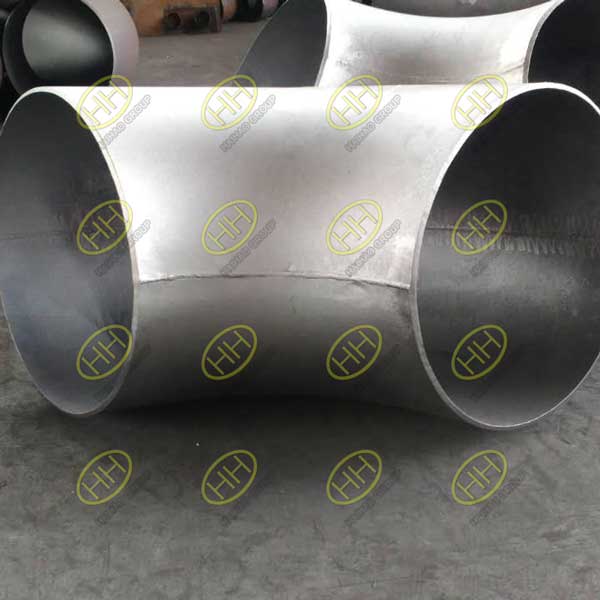Mastering tungsten inert gas welding: Haihao Group’s expertise in precision welding
As a longstanding expert in the field of pipeline systems, Haihao Group not only manufactures high-quality pipeline system accessories but also boasts an experienced technical team proficient in various welding techniques. One of these techniques, tungsten inert gas welding (TIG), also known as gas tungsten arc welding (GTAW), is a specialty of ours.

Manual welding large size elbow
Welding Principle:
TIG or GTAW is a non-consumable tungsten electrode gas shielded welding method that utilizes the arc between the tungsten electrode and the workpiece to melt the metal and form the weld joint. Unlike consumable electrode welding methods, such as shielded metal arc welding (SMAW), in TIG welding, the tungsten electrode remains intact and does not melt or consume during the welding process. Instead, it serves to initiate and maintain the arc while the weld pool is shielded by an inert gas, typically helium or argon. Additional filler metal can be added as needed. TIG welding, particularly when using argon, is often referred to as TIG welding. It offers stable arcs, allowing for the use of low currents and the welding of thin materials. In recent years, TIG welding has found widespread application in the manufacturing and installation of pressure vessels, especially when combined with other welding methods to enhance weld quality.
Welding Characteristics:
TIG welding offers several advantages, including excellent weld quality due to the inert gas shielding, clear visibility of the arc and weld pool, and the ability to achieve fully automated welding in all positions. The concentrated heat of the arc results in a smaller weld pool and faster welding speeds, reducing the size of the heat-affected zone and minimizing workpiece distortion. Additionally, TIG welding produces minimal spatter and creates aesthetically pleasing, dense welds. However, there are also some drawbacks to TIG welding. The cost of inert gas, typically argon, can be relatively high, and the equipment and control systems required for TIG welding are more complex compared to other welding methods. TIG welding also tends to have lower production efficiency and is generally limited to welding thin-wall components, typically those with a thickness of 6mm or less. When welding materials like aluminum, magnesium, or their alloys, alternating current (AC) or reverse polarity direct current (DC) is often used instead of straight polarity DC.
Haihao Group’s expertise in TIG welding allows us to deliver high-quality welded products that meet the stringent requirements of various industries. Our commitment to innovation and excellence ensures that we continue to provide cutting-edge solutions for our clients’ welding needs.

